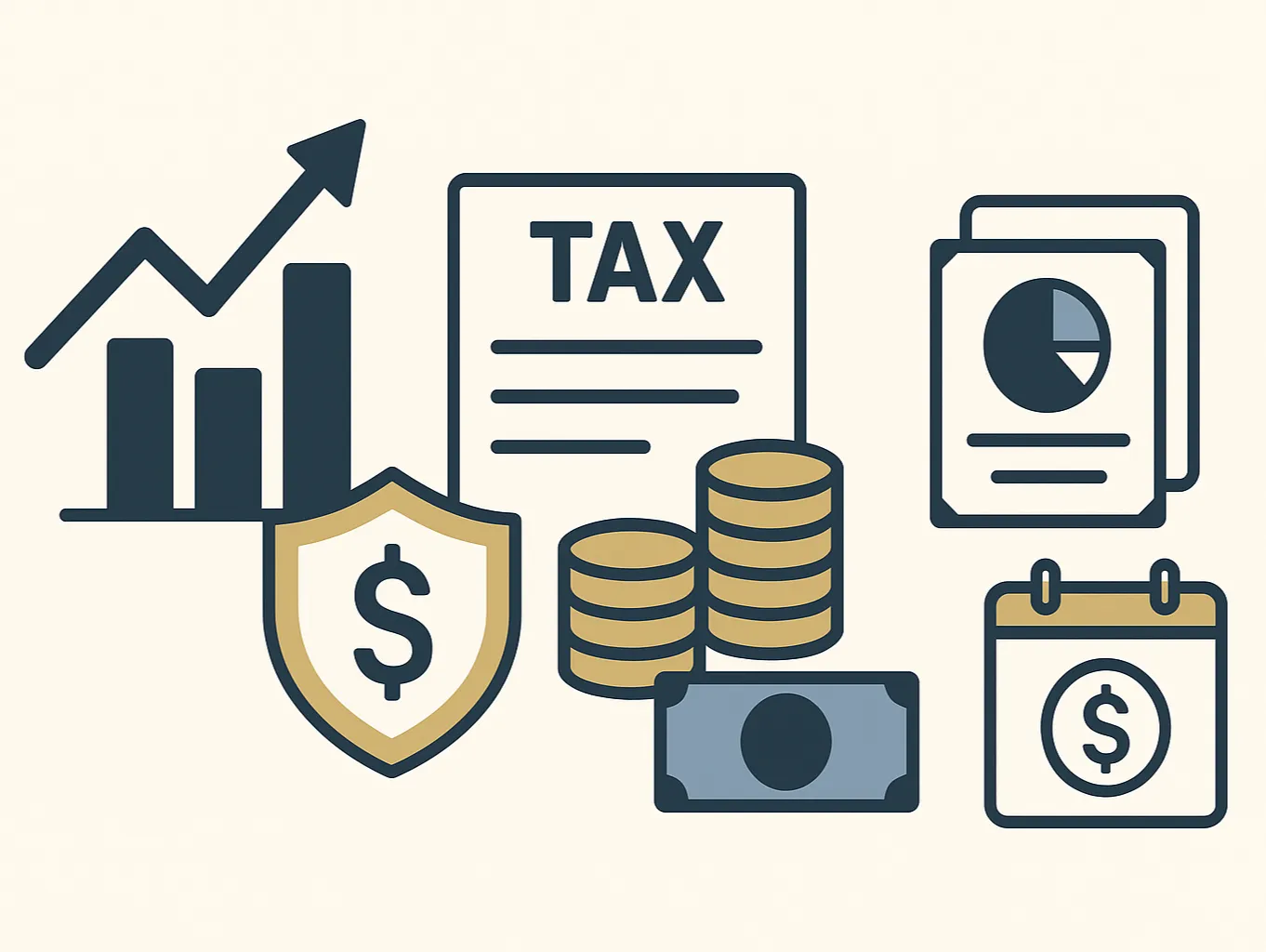Tax Optimization Mutual Fund Distributions: Avoid December Tax Bombs

According to Morningstar, many mutual funds paid capital-gains distributions in 2022, even as most stock and bond funds lost money, leaving some investors with tax bills despite negative performance. Many people assume taxes only follow profits in their own account. In reality, mutual fund structures can push out gains created by other shareholders’ trades. This article explains what creates those December “tax bombs,” why they show up in taxable accounts, and practical, compliant ways to reduce surprises—without abandoning a long-term plan.
Key Takeaways
- Mutual fund capital-gain distributions are taxable in the year paid—even if reinvested—and are generally treated as long-term regardless of how long the fund shares were held.
- Large year-end payouts often stem from portfolio turnover and shareholder redemptions that force funds to realize embedded gains. Many investors experience this even in down markets.
- Buying a fund just before the record date can mean paying taxes on gains earned before owning it; fund companies publish distribution calendars and estimates investors can check.
- ETFs are often more tax-efficient than traditional mutual funds because of in-kind creation/redemption mechanics, though not tax-immune.
- Some investors consider neutral tactics such as placing higher-distribution funds in tax-advantaged accounts, realizing losses to offset gains (subject to wash-sale rules), or donating appreciated shares.
What a “December tax bomb” really is
A year-end capital-gains distribution is a fund’s way of passing through net realized gains from selling holdings. It shows up on Form 1099-DIV, typically in Box 2a (total capital gain distributions). Two details matter for anyone tracking after-tax return:
- Taxable even if reinvested. Reinvesting does not defer taxes; it raises cost basis instead.
- Usually long-term. Capital-gain distributions from mutual funds are treated as long-term for tax purposes, regardless of how long the fund shares were held.
These rules come directly from IRS guidance, not from a fund’s marketing materials.
So what? Understanding the tax character helps a person avoid confusing “growth on paper” with after-tax progress.
Why distributions spike - sometimes when markets fall
Textbook thinking says capital gains follow rising prices. Real-world behavior complicates that:
- Turnover: Active strategies realize gains while repositioning.
- Redemptions: When investors exit, a fund may sell appreciated lot(s) to meet cash needs, realizing gains for everyone left.
- Legacy embedded gains: Funds that outperformed in earlier years can carry large unrealized gains that get realized later.
During the 2022 rate-hike cycle, many diversified funds still reported sizable capital-gains distributions despite negative total returns—an uncomfortable mismatch for taxable shareholders. Similarly, analysts often note that actively managed mutual funds tend to distribute more income and gains than comparable index ETFs, increasing tax drag in taxable accounts.
Timing traps: record dates, “buying a distribution,” and how estimates help
A fund sets a record date, ex-dividend date, and payable date for distributions. Anyone holding shares by the record date receives the payout—along with the tax liability—while the net asset value typically drops by the distribution amount.
- Hypothetical: Imagine a person purchases $25,000 of Fund A on December 14. The fund’s record date is December 15 and it pays a $2.00 per share capital-gain distribution on December 18. The new shareholder receives the payout and owes taxes even though the gain occurred before ownership. The share price often falls by about $2.00 on the ex-date, leaving overall wealth roughly unchanged before taxes.
Fund families publish estimated year-end distributions and calendars so investors can see potential payouts before trading in December. Checking those public estimates is a simple way to avoid “buying” a distribution by accident.
ETFs versus mutual funds: tax-efficient, not tax-exempt
Exchange-traded funds often use in-kind creation/redemption to remove low-basis shares without selling, which can reduce distributable gains. Multiple analyses have shown ETFs are often more tax-efficient than traditional mutual funds, though they can still distribute gains in certain scenarios.
So what? Structure can influence after-tax results. Some investors prefer holding higher-distribution vehicles in tax-advantaged accounts and using more tax-efficient vehicles in taxable accounts—subject to their goals and risk tolerance.
A neutral, compliance-friendly playbook to reduce surprises
This isn’t about predicting markets; it’s about removing avoidable frictions. Options some investors consider include:
- Account placement: Hold funds that historically make sizable distributions inside 401(k)s, 403(b)s, traditional IRAs, or Roth IRAs when possible; hold more tax-efficient vehicles in taxable accounts, depending on the person’s situation.
- Use the calendar: Check fund company estimates for record and payable dates before year-end trades in taxable accounts.
- Harvest losses carefully: Realized losses can offset realized gains; however, the IRS wash-sale rule can disallow a loss if a “substantially identical” security is repurchased within 30 days.
- Think basis, not just price: Reinvested distributions increase cost basis, which matters when shares are eventually sold. Keeping an accurate basis helps avoid paying tax twice. (IRS Pub. 550 details the mechanics.)

